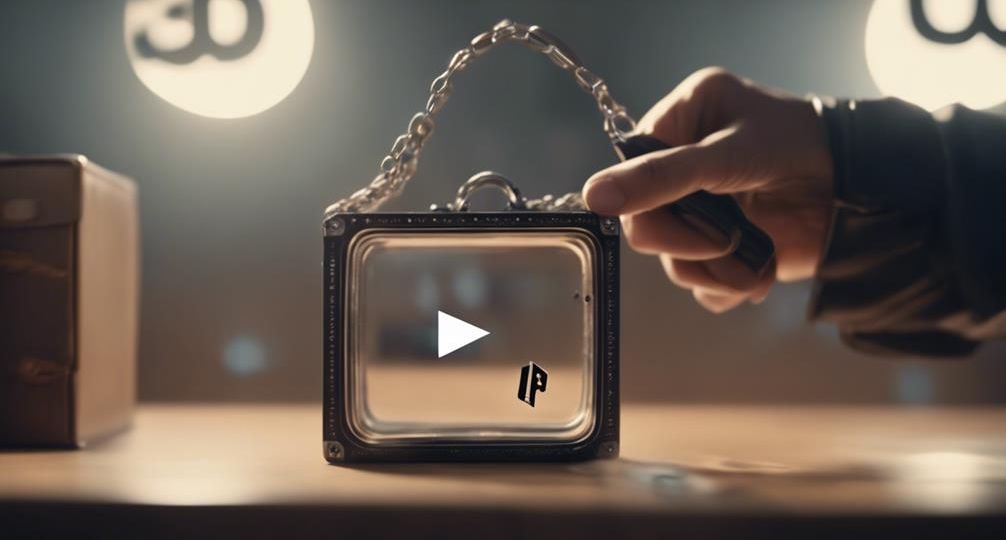
Can you sue someone for stealing your YouTube video?
They say imitation is the sincerest form of flattery, but when it comes to someone stealing your YouTube video, that’s a whole different ball game. It’s a clear violation of copyright laws, but can you actually sue the culprit?
What if they’re in a different country or under a pseudonym? And even if you could, would it be worth the time, effort, and money?
Let’s dissect this complex issue, and find out what your options might be.
Key Takeaways
- Yes, you can sue someone for stealing your YouTube video, as it’s a violation of Intellectual Property Rights and YouTube’s copyright policies.
- Legal action may include high financial penalties, reputational damage to the offender, and even incarceration.
- Initiating legal proceedings requires gathering solid evidence of the theft, including date, views, and communication with the offender.
- Legal costs can be substantial, involving attorney fees, court filing fees, discovery costs, and expert witness fees, but pro bono representation and alternative dispute resolution methods may help manage these expenses.
Understanding Copyright Infringement
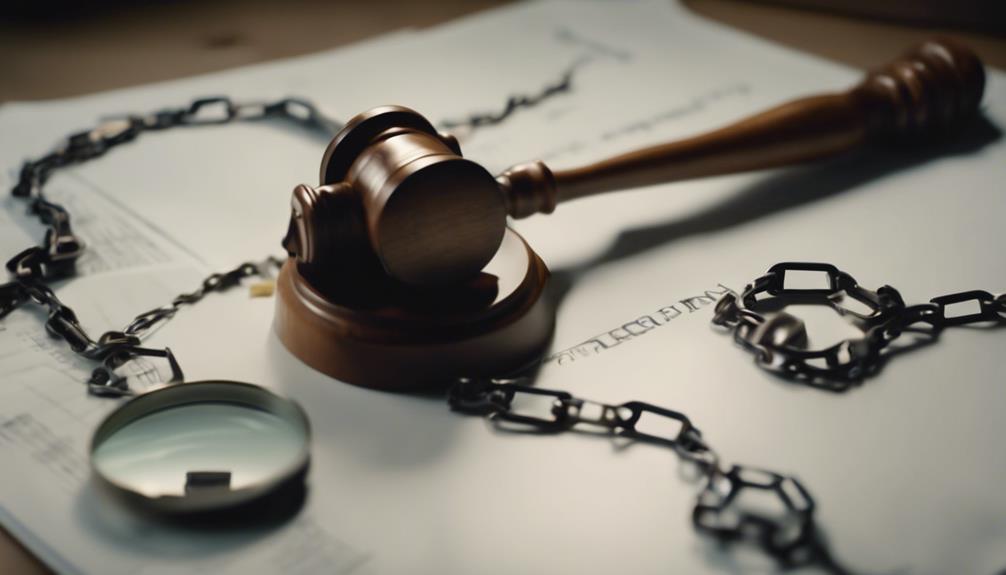
To understand the basis of suing for stolen YouTube videos, you must first grasp the concept of copyright infringement, which is the unauthorized use of copyrighted materials. It’s a violation of Intellectual Property Rights (IPR) and can lead to serious legal consequences.
Now, you might wonder how this applies to the digital sphere. Copyright laws extend to the internet and protect original content posted online, including your YouTube videos. If someone steals your video, reposts it, and profits from it without your permission, that’s copyright infringement. But it’s not always that straightforward.
The Fair Use Doctrine complicates matters. This legal principle allows limited use of copyrighted material without obtaining permission from the rights holder. It’s often invoked in situations involving criticism, news reporting, teaching, and research. However, its application hinges on certain factors like the purpose of the use, nature of the copyrighted work, amount used, and its effect on the potential market for the original work.
YouTube’s Copyright Policies
You need to grasp YouTube’s copyright rules to protect your content.
When you notice a breach, it’s crucial to report it promptly.
Be aware, violating these policies can lead to severe consequences.
Understanding YouTube’s Copyright Rules
Understanding YouTube’s copyright rules is crucial if you’re seeking to protect your original content from theft or unauthorized use. The platform’s policies are designed to balance creator rights with the fair use debates, acknowledging the transformative nature of some content.
‘Fair use’ is a legal doctrine permitting limited use of copyrighted content without permission, often sparking debates due to its ambiguity. YouTube’s rules also bear a significant impact on monetization, the key revenue source for many creators.
If you’re found violating these rules, it can lead to demonetization or even channel termination. Hence, grasping these policies is essential for maintaining a successful, profitable presence on the platform, and for safeguarding your intellectual property.
Reporting Copyright Infringements
When it comes to spotting an unauthorized use of your original YouTube content, it’s crucial to know how to report these copyright infringements effectively in line with YouTube’s policies. The digital watermarking importance is underscored as it aids in identifying your content. Remember, fair use confusion doesn’t justify theft.
Firstly, log in to your YouTube account. Then, navigate to the offending video and select ‘Report’ under the description. Choose ‘Infringes my rights’, then ‘Infringes my copyright’. YouTube’s copyright complaint webform will appear. Fill it out, providing requisite evidence of ownership. If you’ve incorporated digital watermarking, this can expedite the process.
Be aware of fair use, which can sometimes be misunderstood. It’s not a blanket right to use your content. Instead, it’s a legal doctrine permitting limited use under specific circumstances.
Consequences of Copyright Violations
In the aftermath of a reported copyright violation, YouTube enforces strict policies, potentially leading to severe consequences for the offender. It’s crucial you understand the digital piracy consequences and respect intellectual property rights.
Here is a breakdown of possible repercussions:
| Action | Consequence |
|---|---|
| First Offence | Warning |
| Second Offence | Temporary Suspension |
| Third Offence | Channel Termination |
| Legal Action | Possible Lawsuit |
Be aware that the initial warning is more than a slap on the wrist; it’s an indication of YouTube’s commitment to uphold creators’ intellectual property rights. A second offence could lead to a temporary suspension of your account, while a third could terminate your channel entirely. Moreover, the original content owner may decide to pursue a lawsuit against you.
Identifying Video Theft
Detecting video theft on YouTube often involves scrutinizing for unauthorized replication or distribution of your original content. It’s crucial to stay vigilant and apply theft detection techniques, as such infringement can severely impact your viewership and revenue.
The first sign of theft may appear as an unexpected decrease in views. When a copy of your video gains traction, it can divert traffic away from your original upload. Keep an eye on your analytics, particularly sudden drops or inconsistent data patterns.
Another method to identify theft is to regularly search for your video title or related keywords. In doing so, you might stumble upon the stolen content. It’s a good practice to periodically check the YouTube platform and other popular video sharing sites.
Consider using digital watermarking or branding on your content. This can help identify your videos if they’re copied and uploaded elsewhere, making it easier for you to prove your ownership.
Lastly, you can use specialized software tools that scan the internet for replicated content. Despite their cost, they provide a comprehensive solution and can save you significant time and effort.
Steps to Report Stolen Content
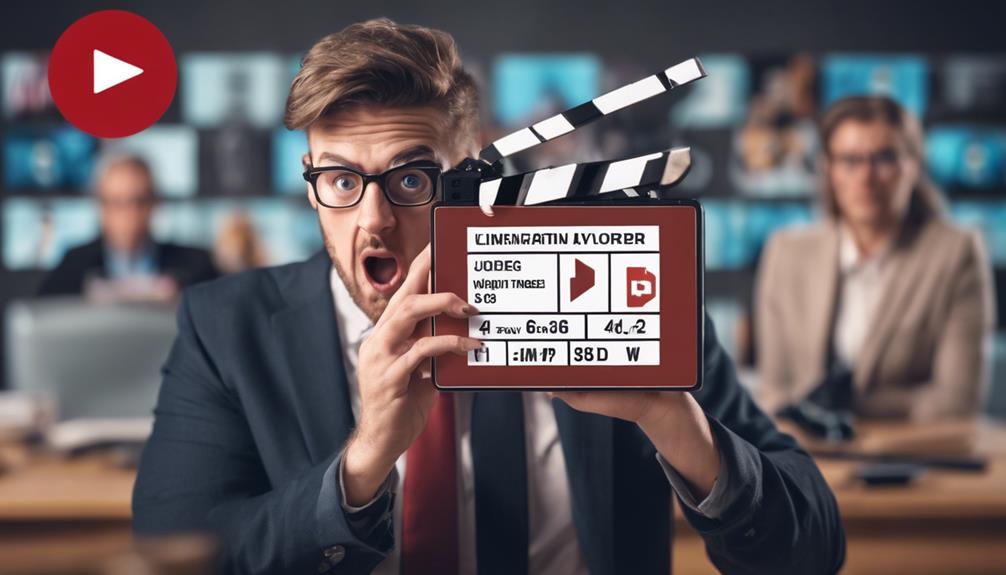
If you’ve discovered that your YouTube video content has been stolen, it’s critical to know how to respond.
First, you’ll need to accurately identify instances of copyright infringement.
Then, you’ll navigate YouTube’s specific reporting process to report the theft.
Identifying Copyright Infringement
To effectively report stolen content, you must first accurately identify instances of copyright infringement. This process involves understanding key legal concepts such as the Fair Use Doctrine and the Digital Millennium Copyright Act (DMCA). It’s crucial to know that not all instances of content repurposing fall under copyright infringement due to the Fair Use Doctrine.
Here’s a brief guide to help you identify potential copyright infringements:
| Action | Fair Use | Copyright Infringement |
|---|---|---|
| Using clips for commentary or criticism | Yes | No |
| Monetizing the stolen content | No | Yes |
| Reproducing the content without transformation | No | Yes |
| Crediting the original creator | No | Yes |
Executing YouTube’s Reporting Process
Once you’ve identified potential copyright infringement, it’s time to navigate YouTube’s reporting process and take the necessary steps to report the stolen content. First, head to the infringing video and click ‘Report’ under the ‘More’ option. Select ‘Infringes my rights’, then ‘Infringes my copyright’. YouTube’s copyright complaint form will then prompt you to provide necessary details about the infringing content and your original video.
Complying with platform guidelines maximizes the effectiveness of your report. It’s crucial to furnish accurate information, since false claims can lead to content monetization restrictions or even account termination. Remember, YouTube’s reporting process is designed to protect creators’ rights while fostering an environment conducive for innovative content creation.
Legal Ramifications of Video Theft
Navigating through the murky waters of video theft, you’ll find that legal ramifications can be quite severe, often involving hefty fines and potential jail time. The Digital Piracy Impact isn’t trivial, as it erodes the Video Monetization Rights of creators. This, in turn, stifles innovation, hinders content creation and consequently, disrupts the digital economy.
Consider, for instance:
- The financial penalties imposed by courts can be astronomical, potentially running into millions of dollars. This is designed to deter would-be offenders and compensate the aggrieved parties for their loss.
- Video theft could lead to incarceration, depending on the magnitude of the theft and the jurisdiction involved. Juxtapose this with the time and effort it takes to create original content.
- The reputational damage caused by such acts can be devastating, leading to loss of trust and credibility.
The law is clear – unauthorized usage of another person’s content is a violation of their intellectual property rights. But beyond the legal implications, it’s about respecting the work of others, fostering a culture of innovation and upholding the integrity of the digital space.
Process of Filing a Lawsuit
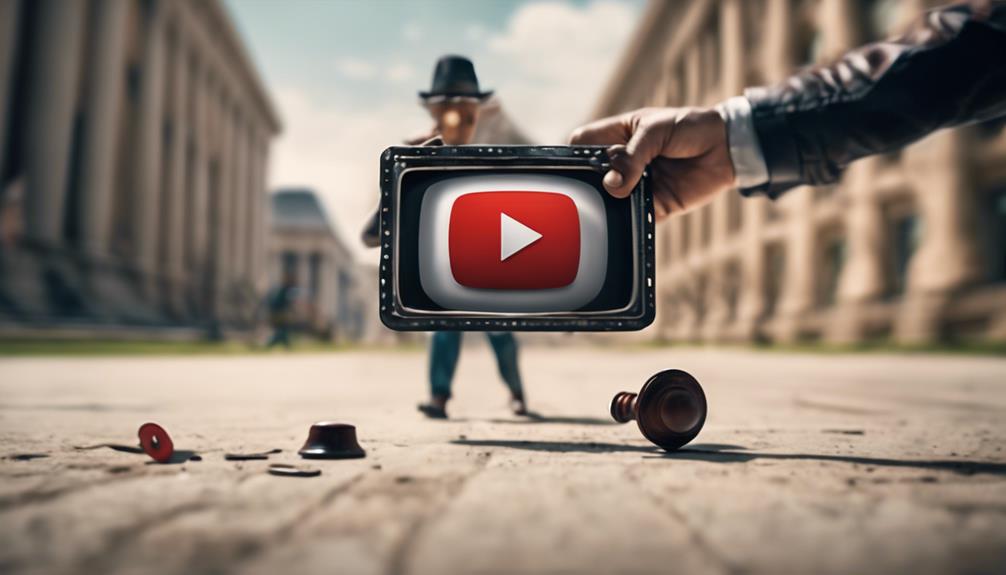
Filing a lawsuit for stolen YouTube videos requires a step-by-step approach.
First, you’ll need to gather solid evidence that substantiates your claim.
Then, initiating legal proceedings becomes your next crucial step.
Gathering Evidence
To build a strong case for your stolen YouTube videos lawsuit, you’ll need to meticulously gather all relevant evidence. Digital forensics becomes your best ally in this endeavor.
The process of evidence preservation is paramount and it involves three critical steps:
- Capture the exact date and time the theft occurred. Document any comments, likes, shares, or views the stolen video received.
- Screenshot the stolen video on the infringing platform. Preserve any related webpages that show the theft.
- Maintain records of any communication with the offender. This might include emails, comments, or direct messages.
Legal Proceedings Initiation
Once you’ve armed yourself with compelling evidence, it’s time to kickstart the legal proceedings for your stolen YouTube videos lawsuit. Now, legal representation selection becomes crucial. Choose an attorney experienced in copyright law, ideally someone who understands the digital landscape and its evolving nature. They’ll guide you through jurisdiction complexities, intricacies of filing the lawsuit, and streamline this daunting journey.
Next, determine the correct jurisdiction to file your lawsuit. This can be complex, particularly when dealing with internet-based disputes crossing international borders. Your attorney will help decipher this maze. Often, jurisdiction is based on where the defendant is located, but it may also depend on where the alleged infringement occurred. Remember, initiating legal proceedings is a significant step requiring meticulous planning and strategy.
Proof Required for a Lawsuit
What evidence do you need to substantiate your claim in a lawsuit for stolen YouTube videos? As it turns out, there’s more to it than a simple ‘he said, she said’ argument. To prove your case, you’ll need to provide the following:
- Legal documentation: This includes copyright registration certificates or any other formal documents that establish you as the rightful owner of the video content. They prove that you didn’t just create the video, but you’ve also taken steps to legally protect it.
- Digital fingerprinting: By using innovative technology such as Content ID, you can provide a unique digital fingerprint of your video. This powerful tool can help you trace any unauthorized duplicates across the platform, affirming your claim of theft.
- Direct comparison: Present a side-by-side comparison of your original video and the alleged stolen version. Highlight any similarities in content, style, and structure to prove that the content was indeed stolen.
Cost of Pursuing Legal Action
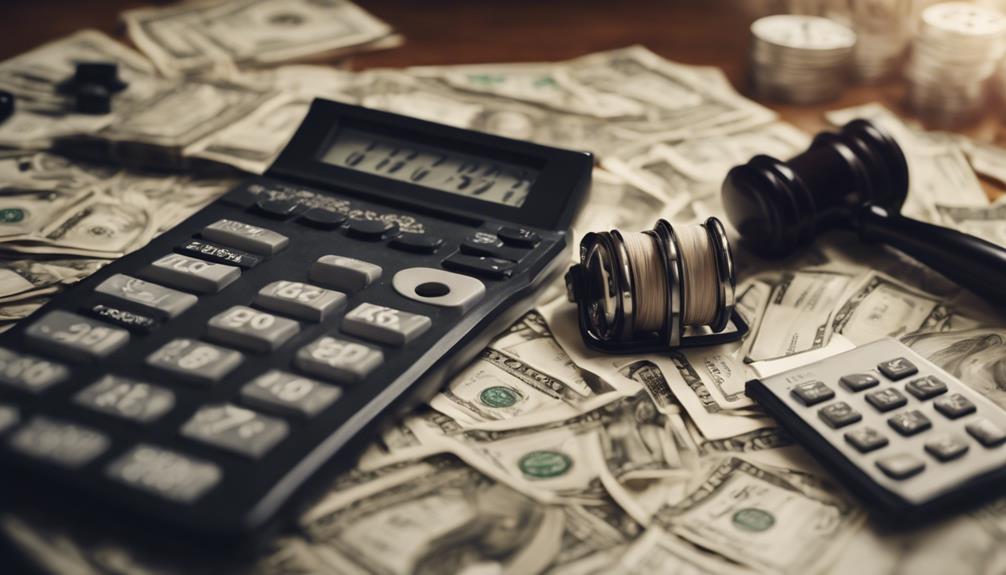
Having gathered your proof, it’s crucial to understand that pursuing a lawsuit for stolen YouTube videos can be a costly endeavor. You’ll need to engage in a meticulous legal expenses analysis, factoring in costs such as attorney fees, court filing fees, and costs for discovery, depositions, and potential expert witnesses. Depending on the complexity of your case, these costs can quickly add up, potentially reaching into thousands or even tens of thousands of dollars.
However, don’t let the costs deter you from seeking justice. There are innovative ways to manage these expenses. One such method is exploring pro bono representation possibilities. Several law firms and legal aid organizations offer free or low-cost services to individuals who can’t afford to hire a lawyer. They’re driven by the ambition to promote justice and equal access to legal representation.
It’s also worth considering alternative dispute resolution methods, such as mediation or arbitration. These can significantly reduce the costs and time involved in a lawsuit. Remember, the goal is to strategically choose the best legal route that aligns with your financial capability and the gravity of your case.
Potential Outcomes of a Lawsuit
You’re probably wondering what happens when you win or lose a lawsuit for stolen YouTube videos. The outcomes can be diverse and largely depend on the strength of your legal representation and the course of settlement negotiations.
- Victory in Court: Winning the lawsuit could result in monetary damages awarded for the theft of your content. This could range from the profits the offender made from your video to potential profits you could have made.
- Settlement: You and the defendant, through your respective legal representation, may agree to settle out of court. This usually involves the offender compensating you financially, but it might also include them agreeing to cease using your content.
- Loss in Court: Losing the lawsuit doesn’t necessarily mean the end. You could appeal the decision, which would require more time and resources.
It’s crucial to remember that each case is unique. Your innovative vision is valuable, and protecting it legally can be complex but worthwhile. Remember, having robust legal representation and being open to settlement negotiations can significantly influence the outcome.
Preventing Future Content Theft
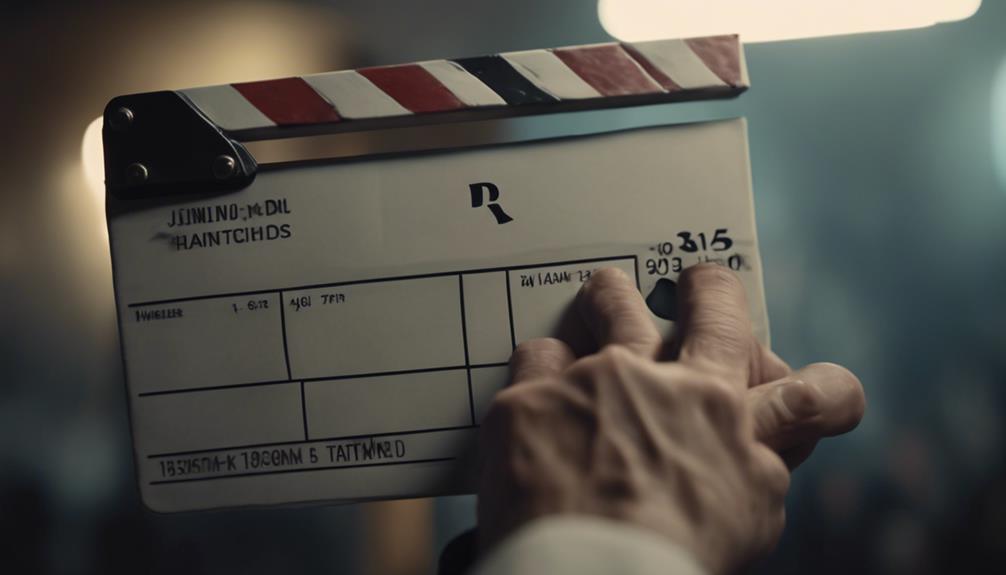
To safeguard your creative work from future theft, it’s essential to implement stringent content protection measures. One of the most effective strategies is content watermarking. This involves embedding a visible or invisible unique mark on your video. It’s similar to stamping your brand, ensuring that even if your content is stolen, the watermark remains, identifying you as the original creator.
Furthermore, consider employing digital rights management (DRM) technologies. This advanced system controls access to copyrighted materials and restricts unauthorized usage. DRM tracks and manages who views your content, and in what manner, providing a robust shield against piracy.
Also, be proactive in monitoring your content’s usage across the internet. Regularly search for your content online to spot any unauthorized use. Remember, the sooner you identify a theft, the quicker you can take action.
Moreover, familiarize yourself with YouTube’s copyright infringement policies. Knowing what actions YouTube takes against violators can give you an added layer of protection.
Alternatives to Legal Action
While pursuing a lawsuit might seem like the only recourse when your content is stolen, there are alternatives that can save you time, money, and stress. One such alternative is to explore mediation options, which can be both efficient and cost-effective. Mediation offers an opportunity to negotiate with the person who’s stolen your content, potentially leading to an agreement that satisfies both parties.
In addition to mediation, out of court settlements are also a viable route. This can often result in a quicker resolution, without the need for a lengthy, costly trial.
Here are three key ways to approach this:
- Negotiation: Approach the offender directly and propose a resolution. This could involve asking them to remove the stolen content, or agreeing on compensation.
- Mediation: Enlist a third-party to facilitate discussions and assist in reaching an agreement. This can often lead to more creative and mutually beneficial solutions.
- Out of court settlements: If the offender is open to it, agree on a settlement without involving the courts. This can save you both significant time and money.

